- Home
- Tom Clancy
Marine: A Guided Tour of a Marine Expeditionary Unit Page 9
Marine: A Guided Tour of a Marine Expeditionary Unit Read online
Page 9
The USS Whidbey Island/ Harpers Ferry-class [LSD-41/49] Dock Landing Ships are also doing their jobs well. Like the LHDs, you may also see additional units being built in the early 21 st century, if near-term worldwide instabilities continue to grow.
In addition, there are LPD-17-class assault ships. This is the near-term "big ticket" item for us. Just last year it was only a large paper ship. Today it is well on its way to becoming a reality. They are planning to build a total of twelve within the first decade of the 21 st century. The first one is due in 2001. We need to just build that first one, get it out to sea, and then determine what the follow-on units will look like. I don't want production of that first ship to be slowed and priced out of being built by adding more and more systems. I can almost guarantee that the follow-on units will be different from the first one, but we need to get that first one off the line. Also, I want shipyards to be building them at a rapid pace--the quicker we get them the better. But I want that first ship!
On Landing Craft. The Landing Craft, Air Cushioned [LCAC] gives us tremendous capability, though I would like to see a smaller version built. We could outfit these with fire-and-forget support weapons that could go in with the AAAVs and be relatively immune to the inshore mine threat. The older conventional landing craft are eventually going to go away. For now, though, we need them for delivery of follow-on equipment to the beach.
Tom Clancy: What is the status of the Maritime Prepositioning Program?
General Krulak: The MPSRONs have been winners, and the program is healthy today. Just as with everything else, though, we must look at what we will need from MPSRON in the 21st century. That is one of the tasks in my planning guidance : to see if the current MPSRON is really the way to go in the future.
I have a feeling that things may be a bit different. Once upon a time, we (the U.S. and Great Britain) managed instability in the world through a system of coaling stations that were used to refuel the warships of the day. Perhaps we need to look at Admiral Bill Owens's [the recently retired Vice Chairman of the Joint Chiefs of Staff] mobile-base concept. This is a modular self-propelled floating air/logistics base, which can be moved to a crisis area and would provide the ability to anchor a large support and logistics base right off the coast of a combat zone. We need, however, to look at the trade-off of such a concept with the current MPSRON scheme, which is mainly to haul equipment and supplies, not serve as a core base for their operations.
One of the other significant challenges faced by General Krulak is the matter of the extremely high operational tempos (Optempos) that have faced the U.S. military in general, and the U.S. Marine Corps in particular. With future Optempos projected to increase in the years ahead, his thoughts are insightful.
Tom Clancy: Let's talk a bit about the Optempos that the U.S. military in general, and the Marine Corps in particular, has been sustaining over the last few years, particularly in light of the recent cutbacks. Could you talk a little about this and its effects on the Corps?
General Krulak: Marines operate. Marines deploy. It's what we do. It's what the nation needs for us, with our Navy shipmates, to do. Optempo is going to have long term impacts on personnel and is hastening the modernization problem that is rapidly coming upon us. In regard to the latter, we are using our equipment up--going beyond the fatigue and service lives of equipment--earlier than planned. In addition, we are beginning to see maintenance problems as a result of delayed or deferred maintenance. Funding is a problem too. We are going to see lost opportunities to stretch out the life of our equipment without the proper moneys at the right time. This level of Optempos costs us training time and limits our options on how and when we repair things, which in turn gets us out of sync with the planned funding for that repair.
There is also the human cost of high Optempos. You already have problems with the families, wear and tear on the people. What is amazing, though, is that the individual Marines are loving the work, because that's what they came in to the Corps to do in the first place. The wives and families struggle, but the Marines love to work hard! It's a strange dichotomy for us to balance in the future.
The crown jewels of the Marine Corps today are its force of seven MEU (SOC)s. These compact, highly mobile forces are the key to maintaining the United States' capability to "kick in the door" to a hostile coastline, should it be required. General Krulak's thoughts on the future of these forces are important, because they represent the last remaining vestige of our once-robust amphibious capabilities.
Tom Clancy: The MEU (SOC)s. You have seven now, but will that be enough in the future?
General Krulak: I think seven are enough to do the job today, though beyond 2005 to 2010 it will not be. What we will need to do is optimize the number of MEU (SOC)s on the various amphibious platforms that we do have. For example, if you have a V-22 that can carry twenty to twenty-five combat-loaded Marines, compared to the eight to twelve carried by the current CH-46 Sea Knight, you increase your capability to deal with the threat. In addition, you may be able to off-load some of the V-22s onto the LPD-17s, and build the mini-MEU (SOC)s that we talked about earlier.
We have to get "outside of the box" in our thinking. We need to package the the MEU (SOC) with the capability to do the mission we are tasked to do, but do so in the minimum possible space aboard the ships. I mentioned earlier the "digitized Marine" squad leader who can call down accurate killing fire on anybody in a matter of seconds. We have to consider what kind of capability that kind of Marine brings to our warfighting ability. I don't know what the implications are today, but I do know that I had better find the answer if the Marine Corps is going to remain relevant in the 21st century.
In my planning guidance I directed the establishment of the Warfighting Lab at Quantico to look at these types of issues. As we develop various concepts of how we should fight or train or equip Marines, they will be tested under a concept called Sea Dragon. Because of new technologies that will be available to the Marines and sailors of the 21st century, in ten years you will see a MAGTF that has much greater capability and can cover more ground than the current MEU (SOC). The size of these units may be dictated more by technology and the capabilities of the individual ships than anything else. The question is just what systems do we really need on the modern battlefield for an expeditionary MAGTF. Do we need an M1 tank or perhaps a more mobile vehicle armed with fire-and-forget anti-armor missiles? Do we need a light tracked vehicle or a derivative of the current wheeled Light Armored Vehicle [ LAV]?
These are the questions the Warfighting Lab and Sea Dragon will address. We are looking forward into the 2010 time frame and checking into a number of other things--equipment, combat support, all kinds of things. Do you think that the United States Marine Corps will look the same in ten years as it does today? I don't think so!
As we closed out our chat with the 31st Commandant of the Marine Corps, General Krulak shared some of his visions of the future, both on the roles and missions of the service as well as the ethos of the Corps in general.
Tom Clancy: Could you talk about the Marine Corps in ten to twenty years in terms of its mission?
General Krulak: I see us as the premier crisis-response force in the world. And I define crisis response as everything from major regional contingencies to disaster relief. Some military forces are so specialized they are like a window washer who only washes square or round windows. I'm telling you that we do windows! You tell me what you want done, I will configure a force for your needs. We are the most flexible military force in the world today. When you tie us to the capabilities of our sister service, the U.S. Navy, we offer a completely unique set of capabilities.
Tom Ctancy: Do you feel good about what you see in the Marine Corps today and in the future?
General Krulak: Absolutely. The capabilities resident in the Marine Corps have been found to be of use and value to the nation. It's interesting that we are not doing things much different today from what we did during the Cold War and before Desert St
orm. We are doing it a little more frequently, but we have not changed our philosophy much; and in the future we are going to become even more valuable. The Marine Corps that I inherited has always done just two things for this country. First, we make Marines; and they are a different type of person in their souls and their minds. Secondly, we win battles. We don't necessarily win major wars by ourselves; that is the job of the U.S. Army. We have, however, been the ones winning the early battles. If we ever stop doing either one of those things, we are finished. Therefore, all of my focus is on making Marines and winning battles. The United States of America needs the Marines.
By the time you read this, General Krulak will be at least halfway through his four-year tour as Commandant of the Marine Corps. His goals and visions will have been scrutinized, the first hard results of his initiatives will have been seen, and his programs will be showing signs of life. Yet, it is perhaps his own persona and character that will be the defining aspect of his commandancy. He has brought the Corps back to its roots, showing a hereditary line back to the qualities that have always made the Marines special to the United States. He truly is a warrior prince of the Marine Corps, and will be an important force as they enter the 21st century. In spite of the shortage of funds and the cutbacks that have been at the core of recent Marine Corps history, there will always be Marines. Trust the son of Brute Krulak to keep that promise.
Transformation: Making Marines
Marine human material was not one whit better than that of the
human society from which it came. But it had been hammered
into form in a different forge.
-This Kind of War, T.R. Fehrenbach
In early 1996 the United States Marines were a small, elite corps of only 195,000 men and women. Every one of these, whether officer or enlisted, shares a common experience as a Marine. They face similar physical and mental challenges, and they must pass the same tests of skill and endurance. Becoming a Marine is an achievement like winning an Olympic medal. No matter what else you may do in life, once you pin on the emblem at the end of Boot Camp, you are a Marine for life. Over the years, the Corps has had its share of members it would like to forget; Lee Harvey Oswald and the idiots who raped a young girl in Okinawa in 1995 come to mind. On the other hand, former Marines such as Art Buchwald, Ed McMahon, Jim Lehrer, and Senator John Glenn exemplify many different kinds of real success.
What kind of person does the Corps want to recruit? The answer to this question determines the kind of Marines we send around the world as America's representatives and, often, our first warriors in a conflict. Does the Marine leadership want automatons who mindlessly follow the orders of a superior? Or do they want a Corps of restless, intelligent young people, asking questions and exploring new solutions to old problems? Today's recruits have to be both physically fit and mentally agile, able to work well on a team, but also able to stay cool on their own in stressful situations. Just how you find such people every year is the subject of this chapter.
The Big Green Machine: The Corps Today
They serve in every country in the world where the United States has diplomatic relations, and probably a few where we don't! Their career specialties include everything from senior managers and leaders to pilots, machinists, and computer technicians. The first thing you notice when you enter their world is that as a group they are physically fit, with the sort of "hard bodies" you might find working out at your local gym. This is a product of training, as well as the yearly requirement for every Marine (including the Commandant) to pass a rigorous physical examination called the Physical Fitness Test (PFT). Composed of a timed three-mile run combined with measured sit-ups and chin-ups on a bar, the PFT is one of the requirements that determines whether someone is still a Marine. Every day, rain or shine, at lunchtime along the riverfront park near the Pentagon, you see men and women in sweat suits running. Running hard. A lot of them are Marines. If you sit in an office all day and live on a diet of donuts and coffee, you won't pass the PFT, and failure to pass it results in an invitation to leave the Corps. This may seem harsh, but it means that Marines are on average the most physically fit personnel in the military services. Every Marine is also required to maintain proficiency with the M16A2 5.56mm combat rifle and other assigned weapons. For staff NCOs and officers this also includes proficiency with the M9 9mm pistol. Failure to maintain weapons qualification is also cause for dismissal. For some 220 years, every Marine has been qualified as a rifleman, and this is not about to change in today's Corps.
Another striking thing you notice about the Marine Corps is the surprisingly low proportion of officers, compared with other services. Traditionally the Corps has entrusted greater responsibility to enlisted personnel than other services, and it shows in the telling "nose to tail" (officer-to-enlisted-personnel) ratio in each. While the Navy ratio is about 6 to 1, the Army about 5 to 1, and the Air Force a costly 4 to 1, the Marines have some 8.7 enlisted personnel for every officer. Beyond the benefits that such a ratio has on the morale and self-esteem of enlisted personnel, there are other noticeable effects. Person for person, the Marine Corps is remarkably inexpensive to operate and maintain, since enlisted personnel cost less in salary and benefits than an equivalent number of officers. As a result, the Corps assigns many leadership and supervisory responsibilities to non-commissioned officers. This means that enlisted Marines take orders from sergeants who at one time were just like them, raw recruits headed to Boot Camp.
Marines also have a sense of their personal identity and position in the world. Ask any Marine, and he or she will be able to trace the chain of command all the way from himself or herself right up to the President of the United States. This is not simply a trick, like dogs walking on their hind legs. It is an indication that every Marine is confident of his or her place in the world. And that shows in confident behavior. More important, Marines learn that they are trusted to make good decisions, follow orders, and accomplish tasks in the best way available. If you have worked for a big corporation, with numbing layers of middle management over your head and no sense of personal empowerment, you can appreciate the refreshing clarity that Marines feel about their individual positions and missions.
In Submarine, Armored Cav, and Fighter Wing, I took you along the career paths of officers. This chapter will be different: It will trace the career path for the real backbone of the Marines, the NCOs (non-commissioned officers). Specifically, you'll see how a young man or woman rises through the ranks to reach the legendary rank of gunnery sergeant, or "gunny." The title harks back to the days of wooden ships, when Marines loaded and fired the Navy's cannon. Today, gunnery sergeants are the institutional "glue" that holds the Corps together, maintaining the traditions and making it clear to new recruits and officers that the gunnies really run the Corps. So follow us on the road to Gunny and learn what a career in the Corps is all about.
Prospecting for Gold: Recruiting for the Corps
The raw material for making Marines is provided by your local Marine Corps Recruiting Station. These nondescript little offices, many on the second floors of strip malls across America, are where the Corps puts its own out to find and deliver new Marine recruits for training. To find out more, I spent a Saturday morning at the Recruiting Station in Fairfax County, Virginia. Located just west of Washington, D.C., the station covers much of Northern Virginia. This is a tough place for recruiters. With a median family income of just over $70,000 per year, it is among the most affluent suburban regions in America. That makes recruiting Marines difficult. Very difficult. Running the Fairfax station is Gunnery Sergeant James Hazzard, along with Staff Sergeant Warren Foster and Staff Sergeant Ray Price. Their backgrounds range from artillery operations to helicopter maintenance. Gunny Hazzard also supervises another recruiting annex with two more Staff Sergeants in Sterling, Virginia, covering Loudoun County all the way out to the West Virginia state line. His territory extends from the high-tech headquarters of the U.S. Intelligence community (CIA, NRO, etc
.) in Langley and Chantilly to the horse farms and cornfields of Leesburg.
It is a big territory, with an expanding population and economic base. The demographics combine a solidly white, conservative Protestant majority with a cross-section of almost every imaginable ethnic, racial, and religious group. Something like 70% of the high school graduates in the area go directly into college after graduation. Such young people are unlikely to see the benefits of an enlisted career in the Marines. Even within the various ethnic communities of the area, recruiting is tough. For example, within the Asian American community, tradition dictates that parents want the oldest son to go to school, return to run the family business, and eventually become the head of the family. An old Confucian proverb says: "Good iron is not used for nails, good men are not used for soldiers." That attitude makes it tough for a recruiter who is looking for a few good men.
Marine Corps Recruiting Command has set a relatively modest "mission" (the term "quota" is out of favor) of two per month for each recruiter assigned to the Fairfax station. That's 120 recruits a year for two small offices with only five personnel. An office's recruiting mission is based on the number of qualified military applicants (QMAs) historically recruited from an area. The top-scoring Marine recruiter of 1995, based in the small Midwestern town of Quincy, Illinois, averaged 5.5 enlistments per month, so you can see the problems of the Fairfax recruiters.

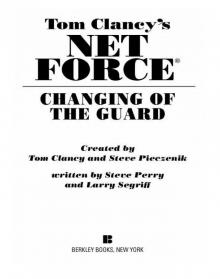 Changing of the Guard
Changing of the Guard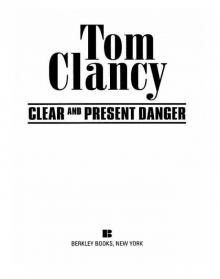 Clear and Present Danger
Clear and Present Danger Hounds of Rome
Hounds of Rome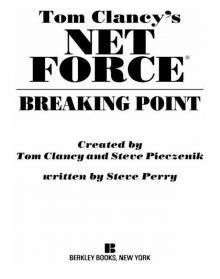 Breaking Point
Breaking Point Tom Clancy's Jack Ryan Books 7-12
Tom Clancy's Jack Ryan Books 7-12 Full Force and Effect
Full Force and Effect The Archimedes Effect
The Archimedes Effect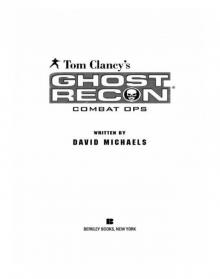 Combat Ops
Combat Ops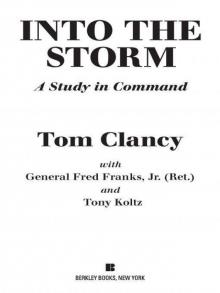 Into the Storm: On the Ground in Iraq
Into the Storm: On the Ground in Iraq Under Fire
Under Fire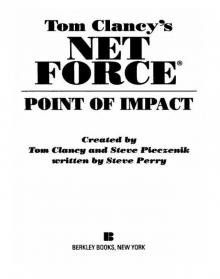 Point of Impact
Point of Impact Red Rabbit
Red Rabbit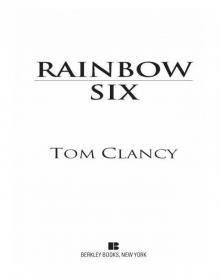 Rainbow Six
Rainbow Six The Hunt for Red October
The Hunt for Red October The Teeth of the Tiger
The Teeth of the Tiger Conviction (2009)
Conviction (2009)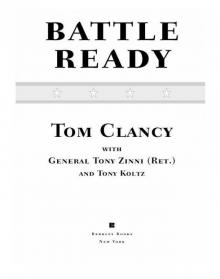 Battle Ready
Battle Ready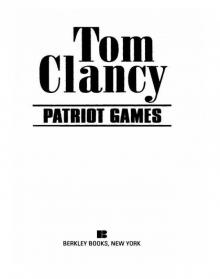 Patriot Games
Patriot Games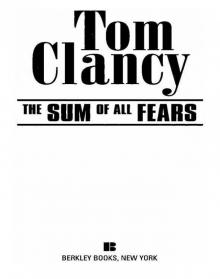 The Sum of All Fears
The Sum of All Fears Fallout (2007)
Fallout (2007) Red Storm Rising
Red Storm Rising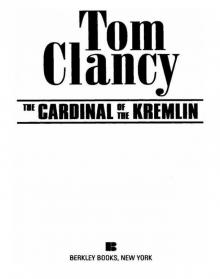 The Cardinal of the Kremlin
The Cardinal of the Kremlin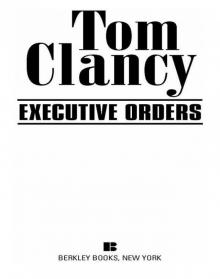 Executive Orders
Executive Orders Lincoln, the unknown
Lincoln, the unknown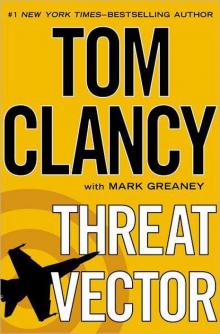 Threat Vector
Threat Vector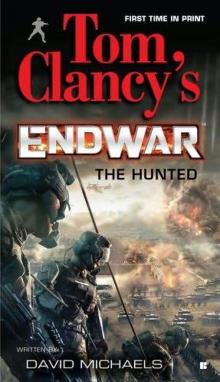 The Hunted
The Hunted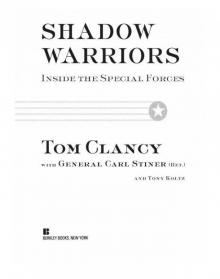 Shadow Warriors: Inside the Special Forces
Shadow Warriors: Inside the Special Forces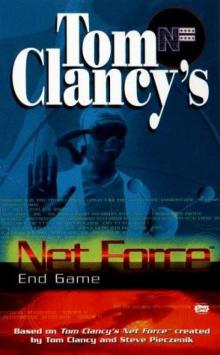 End Game
End Game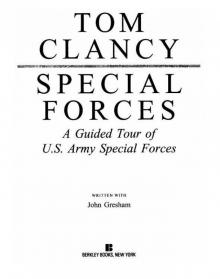 Special Forces: A Guided Tour of U.S. Army Special Forces
Special Forces: A Guided Tour of U.S. Army Special Forces Locked On
Locked On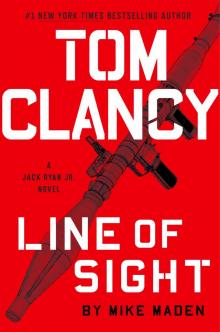 Line of Sight
Line of Sight Tom Clancy Enemy Contact - Mike Maden
Tom Clancy Enemy Contact - Mike Maden Fighter Wing: A Guided Tour of an Air Force Combat Wing
Fighter Wing: A Guided Tour of an Air Force Combat Wing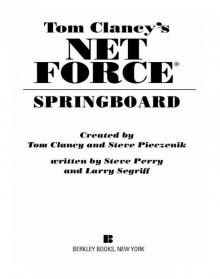 Springboard
Springboard Line of Sight - Mike Maden
Line of Sight - Mike Maden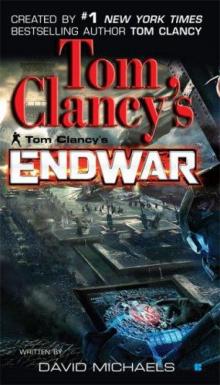 EndWar
EndWar Dead or Alive
Dead or Alive Tom Clancy Support and Defend
Tom Clancy Support and Defend Checkmate
Checkmate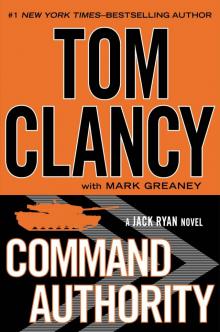 Command Authority
Command Authority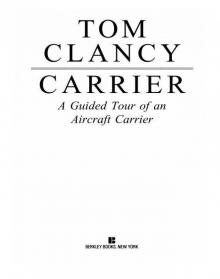 Carrier: A Guided Tour of an Aircraft Carrier
Carrier: A Guided Tour of an Aircraft Carrier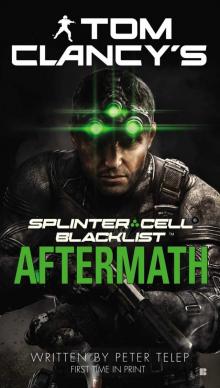 Blacklist Aftermath
Blacklist Aftermath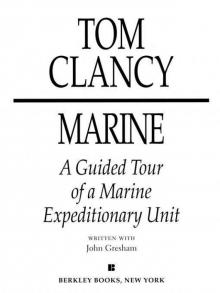 Marine: A Guided Tour of a Marine Expeditionary Unit
Marine: A Guided Tour of a Marine Expeditionary Unit Commander-In-Chief
Commander-In-Chief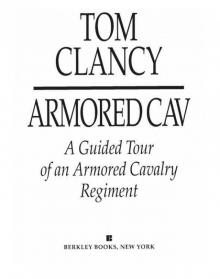 Armored Cav: A Guided Tour of an Armored Cavalry Regiment
Armored Cav: A Guided Tour of an Armored Cavalry Regiment Tom Clancy's Jack Ryan Books 1-6
Tom Clancy's Jack Ryan Books 1-6 The Ultimate Escape
The Ultimate Escape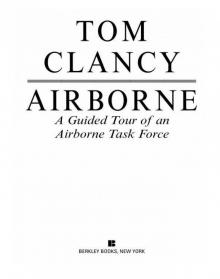 Airborne: A Guided Tour of an Airborne Task Force
Airborne: A Guided Tour of an Airborne Task Force Debt of Honor
Debt of Honor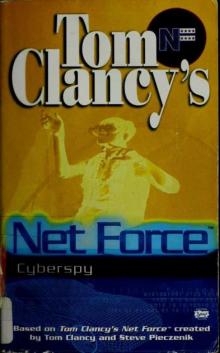 Cyberspy
Cyberspy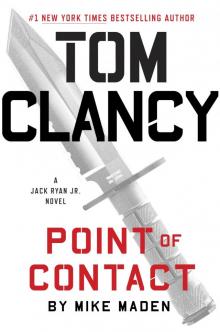 Point of Contact
Point of Contact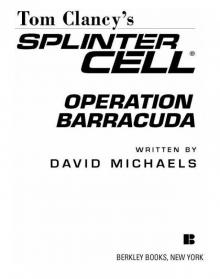 Operation Barracuda (2005)
Operation Barracuda (2005) Choke Point
Choke Point Power and Empire
Power and Empire Every Man a Tiger: The Gulf War Air Campaign
Every Man a Tiger: The Gulf War Air Campaign Endgame (1998)
Endgame (1998)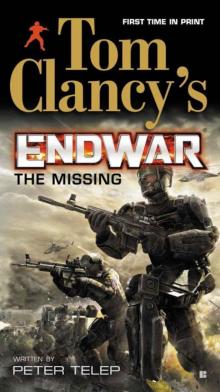 EndWar: The Missing
EndWar: The Missing Splinter Cell (2004)
Splinter Cell (2004)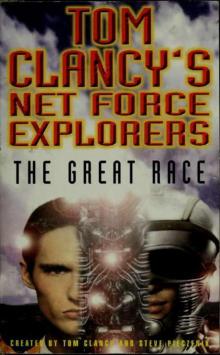 The Great Race
The Great Race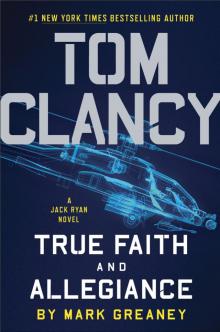 True Faith and Allegiance
True Faith and Allegiance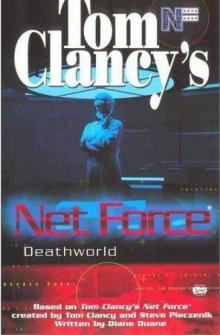 Deathworld
Deathworld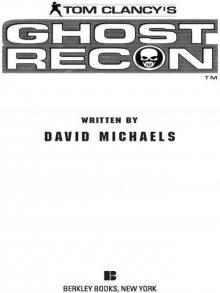 Ghost Recon (2008)
Ghost Recon (2008)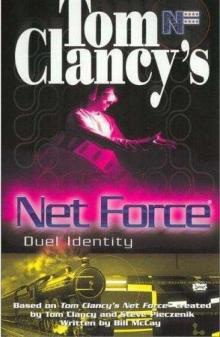 Duel Identity
Duel Identity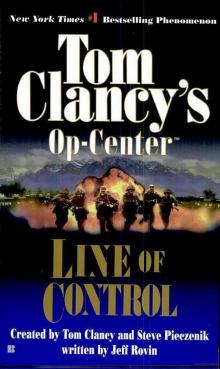 Line of Control o-8
Line of Control o-8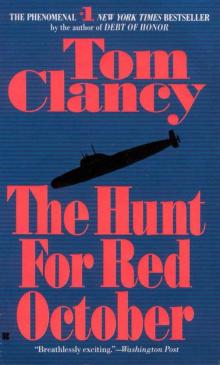 The Hunt for Red October jr-3
The Hunt for Red October jr-3 Hidden Agendas nf-2
Hidden Agendas nf-2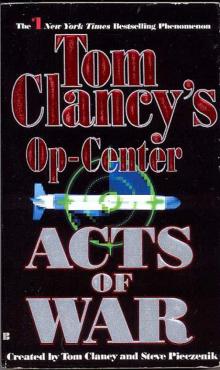 Acts of War oc-4
Acts of War oc-4 Ruthless.Com pp-2
Ruthless.Com pp-2 Night Moves
Night Moves The Hounds of Rome - Mystery of a Fugitive Priest
The Hounds of Rome - Mystery of a Fugitive Priest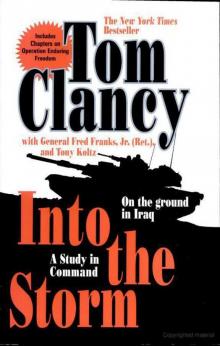 Into the Storm: On the Ground in Iraq sic-1
Into the Storm: On the Ground in Iraq sic-1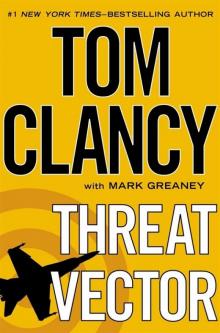 Threat Vector jrj-4
Threat Vector jrj-4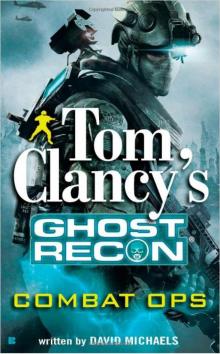 Combat Ops gr-2
Combat Ops gr-2 Virtual Vandals nfe-1
Virtual Vandals nfe-1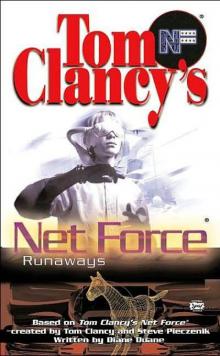 Runaways nfe-16
Runaways nfe-16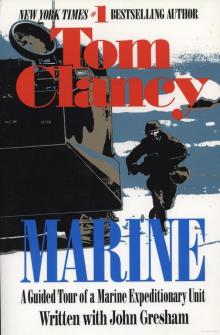 Marine: A Guided Tour of a Marine Expeditionary Unit tcml-4
Marine: A Guided Tour of a Marine Expeditionary Unit tcml-4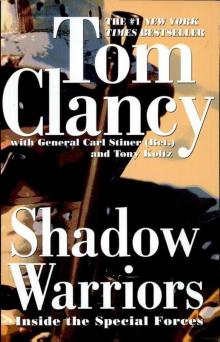 Shadow Warriors: Inside the Special Forces sic-3
Shadow Warriors: Inside the Special Forces sic-3 Jack Ryan Books 1-6
Jack Ryan Books 1-6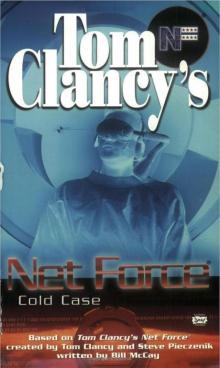 Cold Case nfe-15
Cold Case nfe-15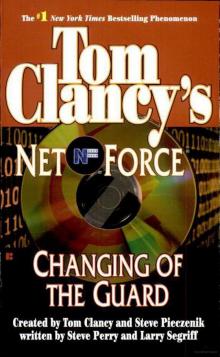 Changing of the Guard nf-8
Changing of the Guard nf-8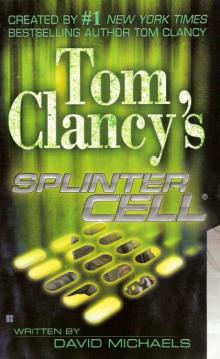 Splinter Cell sc-1
Splinter Cell sc-1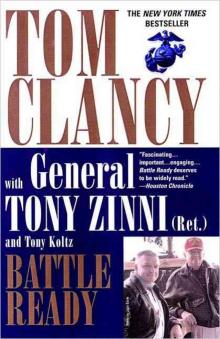 Battle Ready sic-4
Battle Ready sic-4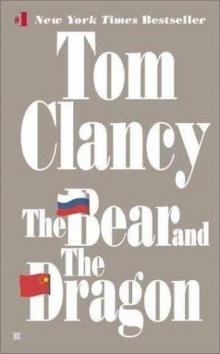 The Bear and the Dragon jrao-11
The Bear and the Dragon jrao-11 Fighter Wing: A Guided Tour of an Air Force Combat Wing tcml-3
Fighter Wing: A Guided Tour of an Air Force Combat Wing tcml-3 Patriot Games jr-1
Patriot Games jr-1 Jack Ryan Books 7-12
Jack Ryan Books 7-12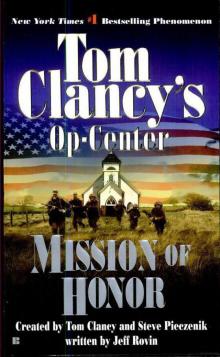 Mission of Honor o-9
Mission of Honor o-9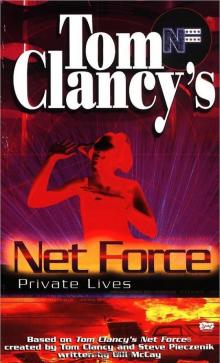 Private Lives nfe-9
Private Lives nfe-9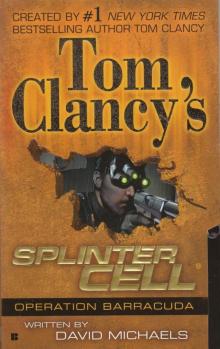 Operation Barracuda sc-2
Operation Barracuda sc-2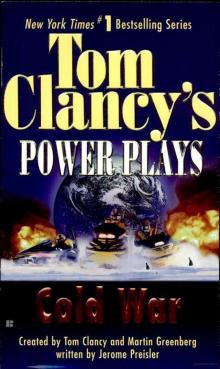 Cold War pp-5
Cold War pp-5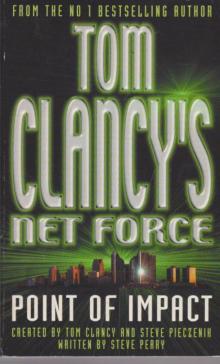 Point of Impact nf-5
Point of Impact nf-5 Red Rabbit jr-9
Red Rabbit jr-9 The Deadliest Game nfe-2
The Deadliest Game nfe-2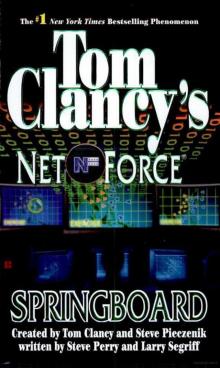 Springboard nf-9
Springboard nf-9 Safe House nfe-10
Safe House nfe-10 EndWar e-1
EndWar e-1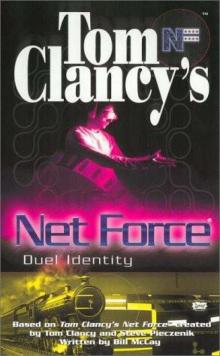 Duel Identity nfe-12
Duel Identity nfe-12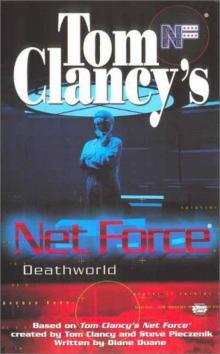 Deathworld nfe-13
Deathworld nfe-13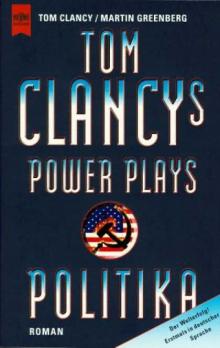 Politika pp-1
Politika pp-1 Rainbow Six jr-9
Rainbow Six jr-9 Tom Clancy's Power Plays 1 - 4
Tom Clancy's Power Plays 1 - 4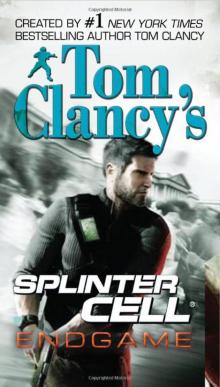 Endgame sc-6
Endgame sc-6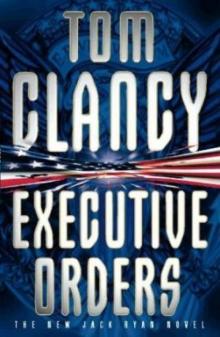 Executive Orders jr-7
Executive Orders jr-7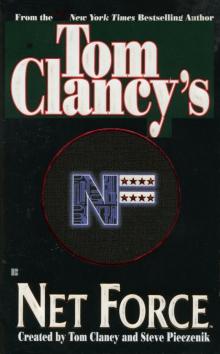 Net Force nf-1
Net Force nf-1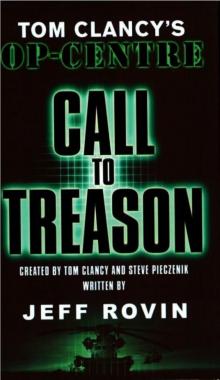 Call to Treason o-11
Call to Treason o-11 Locked On jrj-3
Locked On jrj-3 Against All Enemies
Against All Enemies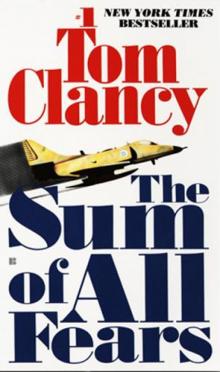 The Sum of All Fears jr-7
The Sum of All Fears jr-7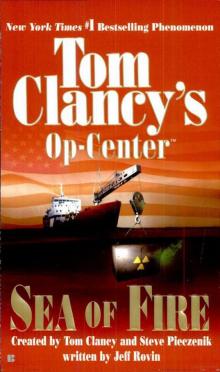 Sea of Fire o-10
Sea of Fire o-10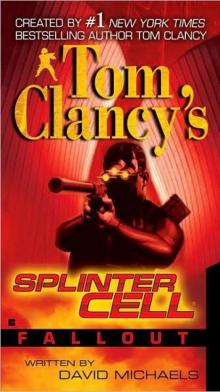 Fallout sc-4
Fallout sc-4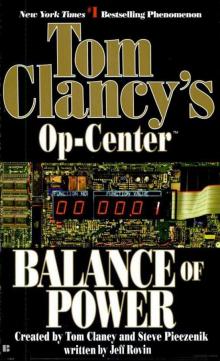 Balance of Power o-5
Balance of Power o-5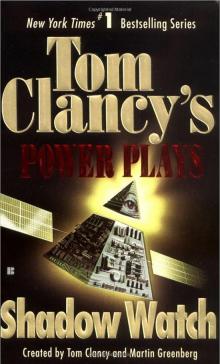 Shadow Watch pp-3
Shadow Watch pp-3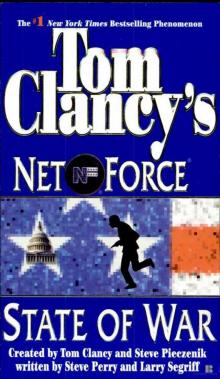 State of War nf-7
State of War nf-7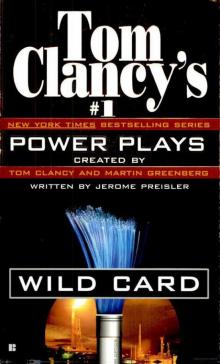 Wild Card pp-8
Wild Card pp-8 Games of State o-3
Games of State o-3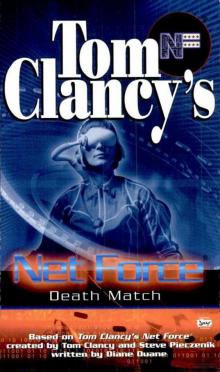 Death Match nfe-18
Death Match nfe-18 Against All Enemies mm-1
Against All Enemies mm-1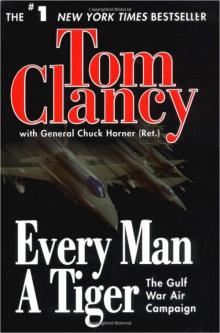 Every Man a Tiger: The Gulf War Air Campaign sic-2
Every Man a Tiger: The Gulf War Air Campaign sic-2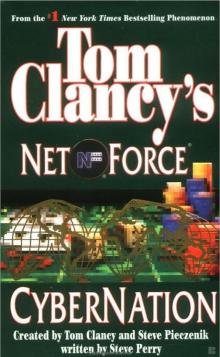 Cybernation nf-6
Cybernation nf-6 Support and Defend
Support and Defend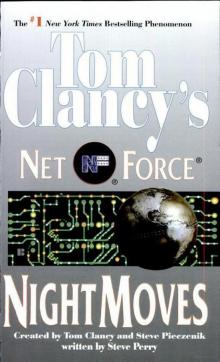 Night Moves nf-3
Night Moves nf-3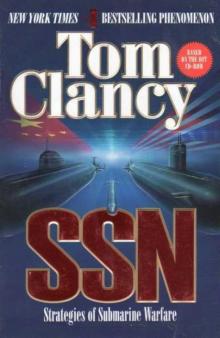 SSN
SSN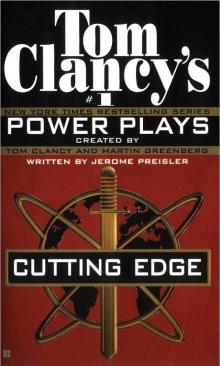 Cutting Edge pp-6
Cutting Edge pp-6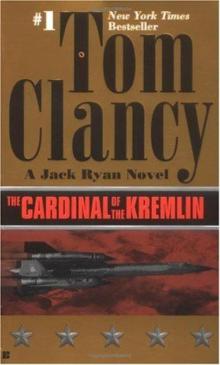 The Cardinal of the Kremlin jrao-5
The Cardinal of the Kremlin jrao-5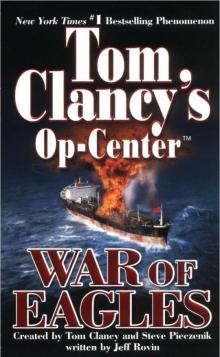 War of Eagles o-12
War of Eagles o-12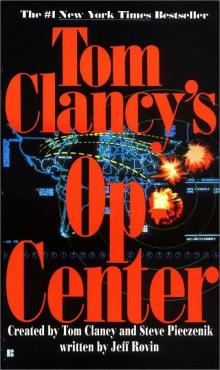 Op-Center o-1
Op-Center o-1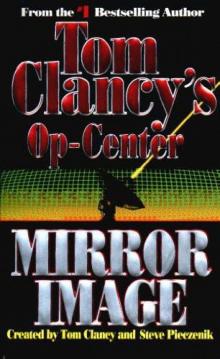 Mirror Image o-2
Mirror Image o-2 The Archimedes Effect nf-10
The Archimedes Effect nf-10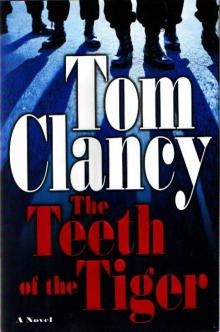 Teeth of the Tiger jrj-1
Teeth of the Tiger jrj-1 Bio-Strike pp-4
Bio-Strike pp-4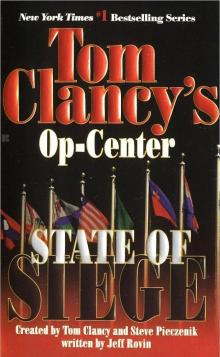 State of Siege o-6
State of Siege o-6 Debt of Honor jr-6
Debt of Honor jr-6 Zero Hour pp-7
Zero Hour pp-7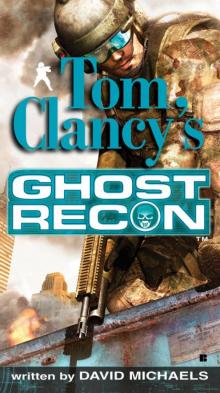 Ghost Recon gr-1
Ghost Recon gr-1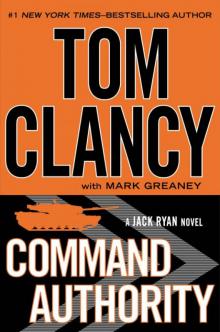 Command Authority jr-10
Command Authority jr-10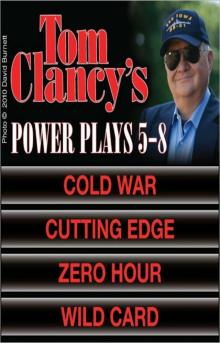 Tom Clancy's Power Plays 5 - 8
Tom Clancy's Power Plays 5 - 8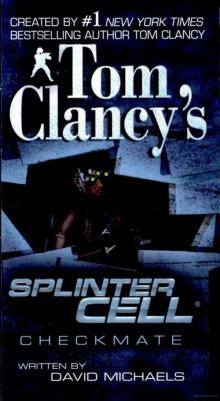 Checkmate sc-3
Checkmate sc-3 Breaking Point nf-4
Breaking Point nf-4 Gameprey nfe-11
Gameprey nfe-11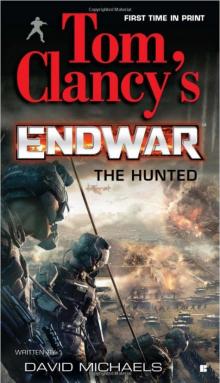 The Hunted e-2
The Hunted e-2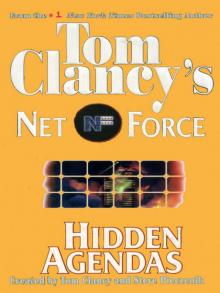 Hidden Agendas
Hidden Agendas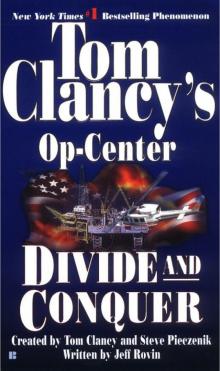 Divide and Conquer o-7
Divide and Conquer o-7